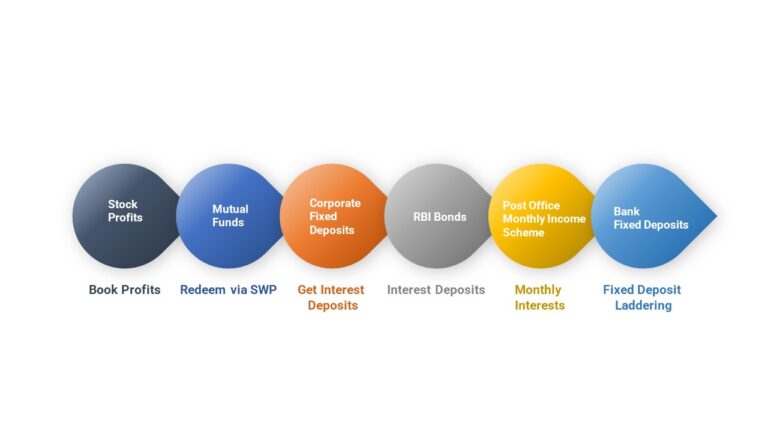We have always faced this decision at some point in our lives – whether to exit an investment or stick to it for longer duration.
Consider the simple example you invested in a Stock that is giving you 35% returns in six months duration and you expect it to grow further in coming years. Should you exit?
In the world of Project Management the Program Managers will clearly define the exit criteria for a Project Manager to exit the Project. For example the new team is completely onboard and meeting the Key Performance Indicators. What Value add will the Project Manager bring by sticking on the Project?
Now consider the above example – the market is giving 7 – 8% returns and the investor is not happy with 35% – the simple strategy in this case is to tell him A Simple and Safe Strategy – “Do Sell and Regret“. If the market goes further up he can regret his decision but booking profits is also a habit and he should exercise this habit regularly.
Investors are often found waiting too long in a bull market for their investments to double or triple. This is a wrong strategy and does not help in the long run.
A portfolio consists of various investment options such as Fixed Deposits, Bonds, and Stocks.

"It is advisable for an investor to consistently secure profits whenever their investments yield favorable returns, and maintain balance in their portfolio by allocating between low-risk and high-risk investments"
In stock market investing, exit criteria play a crucial role in guiding investors towards making informed decisions about when to sell their investments. These criteria are essential as they help investors mitigate risks and maximize returns.
Establishing clear exit points based on predetermined factors such as profit targets, loss limits, or specific market conditions ensures that investors do not succumb to emotional or impulsive trading behaviors.
By adhering to exit criteria, investors can systematically manage their portfolios, protect their capital, and optimize their overall investment performance over time.
This disciplined approach not only enhances financial outcomes but also fosters a strategic mindset that aligns with long-term investment goals. Ultimately, incorporating well-defined exit criteria is integral to achieving stability, minimizing losses, and navigating the complexities of the stock market with confidence and prudence.
You may like our article on 15 ideas to diversifying your Portfolio.
Below are 3 examples of Importance of having an Exit Strategy
1. Example 1:
Imagine an investor who buys shares of a tech company expecting substantial growth. With clear exit criteria in place, such as selling if the stock appreciates by 20% or drops by 10%, the investor can confidently execute their strategy. This prevents them from holding onto the stock indefinitely out of greed or fear, ensuring they lock in profits or cut losses according to their predefined plan.
2. Example 2:
Consider a day trader who sets specific exit criteria based on technical indicators like moving averages or relative strength index (RSI). These criteria help the trader determine when to exit a trade to secure gains or limit losses swiftly and efficiently. By sticking to these criteria, the trader avoids emotional decisions driven by market fluctuations, thus maintaining discipline and consistency in their trading approach.
3. Example 3:
For a long-term investor building a diversified portfolio, exit criteria might involve rebalancing assets annually or adjusting holdings based on changing economic conditions. This approach ensures the investor stays aligned with their risk tolerance and investment objectives over time, preventing their portfolio from becoming overly concentrated in one sector or asset class that could pose undue risk.
Having a clear strategy for exiting investments that have outperformed the market is paramount for investors aiming to maximize returns and manage risk effectively. Such a strategy ensures that investors capitalize on their gains while maintaining discipline and preventing emotional decision-making. By establishing predetermined exit criteria based on factors like profit targets or market conditions, investors can secure profits at opportune times and reinvest capital into new opportunities. This proactive approach not only safeguards against potential downturns but also fosters a systematic approach to portfolio management. Ultimately, a well-defined exit strategy not only enhances financial outcomes but also instills confidence and resilience in navigating the dynamic landscape of the stock market. Thus, it underscores the importance of strategic foresight and prudent decision-making in achieving sustainable investment success over the long term.




